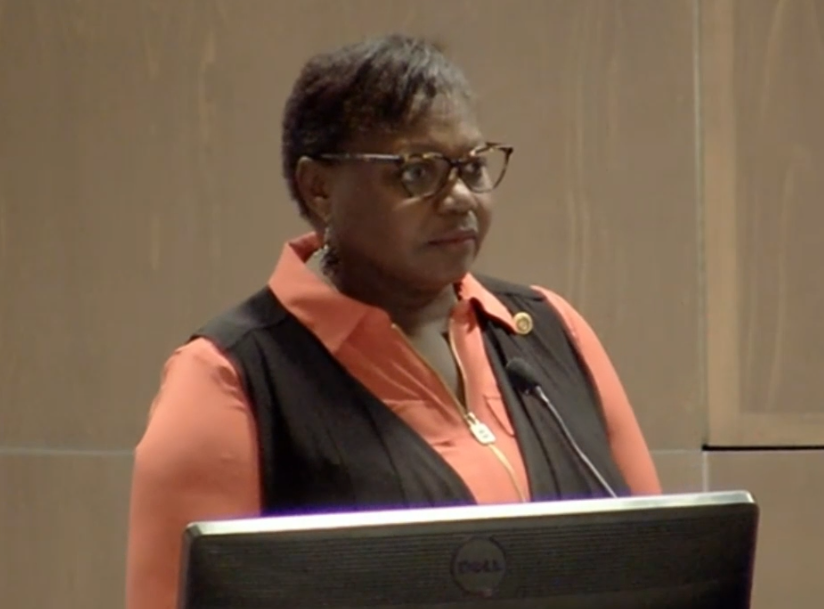The Upper Grand District School Board will be making its final decision on police presence in schools next month and seems to be leaning toward removing it.
At a school board meeting Tuesday evening, representatives from the Police Presence in Schools Task Force presented seven recommendations including the removal of the School Resource Officer (SRO) program.
“We’re not talking about people and bad people. We’re talking about systems,” said Marva Wisdom, community leader and a member of the Police Presence in Schools Task Force as she elaborated on the idea that people tend to get offended with the term systemic racism.
The recommendations were presented with a detailed report on police presence in schools created after several community surveys, virtual meetings and discussions with the community and also the police that have been taking place since last summer. The Police Presence in Schools Task Force was created to make recommendations on having police presence in schools after many community members and BIPOC expressed concerns about police targeting BIPOC students.
The study found that ‘BIPOC respondents were twice as likely to want to remove police from schools than those identifying as white,’ and that 2SLGBTQIA+ were two and a half times more likely to want to remove police from schools than those identifying as white.
“If we centre the voices of marginalized communities that experience harm through an equity lens, we can see that for the BIPOC and the 2SLGBTQ+ communities, they are experiencing harm,” said Joy Sammy, community member from the task force.
The task force recommended that The School Resource Officer program in high schools be discontinued, that administrators collect data on all incidents that police respond to at schools, that staff collect feedback on all police presentations in schools, that students and parents be notified in advance of all police presentations at school, that police presentations be vetted, that the presence of police at all schools continue when a violent threat risk assessment is activated and that the board and police continue to deliver all foot safety patrol training and bus patrol training.
The decision to pass the motion was deferred until the school board meeting on April 27 to allow further voices to be heard.
Wisdom said the program is poorly set up and has moved away from what it was supposed to have been, something police also recognize.
“When a system is broken that way, gluing it together, what is going to happen eventually, the stress is going to cause cracks and that's going to be a problem and we end up back in the same place that we are today,” said Wisdom.
“And that's why our group after exhaustive discussions , conversations and presentations decided we really need to make sure were building the strongest foundation with our children at the centre and with a really wonderful partnership between the school board and policing with a determination with going forward together with the same understanding based on whatever the new iteration might look like.”
The 153-page Police Presence in Schools Task Force report revealed that the SRO’s symbolically represent different things to different groups.
Feedback from Indigenous students showed a deep mistrust of police that “has been woven into the fabric of Indigenous children’s lives and worldview.” It also revealed that the SRO program has been inconsistent between schools and that 51 per cent of students had no opinion of police presence in schools.
Interviews with secondary school administrators revealed that while some administrators feel empowered with police presence in schools, others feel a loss of control and face uncertainty. The study showed that there is a consensus around the benefits of having the SROs providing presentations and workshops on the law and drug use.
The detailed report can be found here.
Wisdom said the task force found that the impact of SRO’s have not been measured and stressed the importance of measuring impacts in order to find accountability and transparency in police programs.
“We need to start putting in place what this ought to look like,” said Wisdom adding that those conversations can begin in April given that the motion to remove SRO’s has passed.
“We’ve done the work that needs to be done in terms of consultation of what it is. We already know what it is,” said Wisdom.
